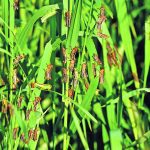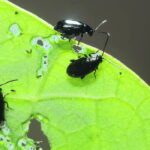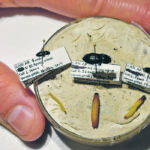CALGARY — Unusually warm weather that lasted into early January prompted a Saskatchewan farmer to warn producers about hot spots and insects in grain bins. “I’m hearing that more and more farmers are finding bugs,” said Michael Reimer, who primarily grows durum wheat near Eston, Sask. “I mean, a year ago, we were at minus […] Read more
Tag Archives crop pests

Global investment in agricultural technology cools off
On the positive side, the number of venture capital firms in Canada specializing in agriculture and agri-food is growing
Two years ago, investors and venture capital firms were dumping billions into agriculture and agri-food technology. Money was flowing toward start-up companies developing plant-based “meat”, biological control of crop pests, field sensors and technology to track food back to the farm. That’s just a partial list. To generalize, ag and food tech was hot. In […] Read more
Grasshopper numbers middle of the road; vary region to region
Grasshopper infestations across Alberta are patchy this year, following a cool April and scorching May with small pockets of moisture, according to a University of Lethbridge entomologist. The usual hotspot for grasshopper populations in southeastern Alberta got a late start compared to the rest of the province, said Dan Johnson. He cited a wet early […] Read more

Grasshoppers out early
Farmers are urged to make sure they are dealing with a pest variety of hopper before they decide to spray.
“The good news is if you have millions you don’t have to know (which species),” said Dan Johnson from the University of Lethbridge. “If you have millions, they are definitely pests. None of the naturally occurring ones out on the rangeland that feed birds and participate in the ecosystem ever form millions.”

Consider moisture before spraying flea beetle
“Canola can take a lot of damage before you actually need to spray. The conditions that make me worried for flea beetles though, are the hot and dry conditions because that makes the flea beetle bites on the plants worse. When it’s hot and dry, the plant can’t compensate for having these holes in it and then the holes lead to increased drying,” said Tyler Wist, an Agriculture Canada research scientist who studies flea beetles.

New field strategy needed to control wheat midge
A recent change may have a seismic effect on wheat and durum growers across Western Canada. In December 2020, the Pest Management Regulatory Agency issued an update on the re-evaluation of the insecticide chlorpyrifos, announcing that chlorpyrifos would be phased out as follows: Last date of sale by registrant: Dec. 10 2021 Last date of […] Read more

Seeding practices reduce flea beetle damage
Seed treatments should protect canola if it reaches the three- to four-leaf stage within three to four weeks of seeding
What’s tiny, loves heat, eats away at farm profits and is enough to keep you awake at night? Flea beetles, of course. In the spring of 2021, the pests caused headaches and sleepless nights for canola growers across Western Canada. But according to John Gavloski, provincial entomologist with Manitoba Agriculture, there’s a reliable way to […] Read more
Got wireworms? There’s a guide for that
Wireworms have been an agricultural pest on the Prairies for more than 100 years, but they remain a bit of a mystery. Growers and agronomists in Western Canada know that wireworms are a problem, but they don’t understand the size of the problem or the economic impacts of wireworms. Wireworms are also difficult to find […] Read more

Got wireworms? There’s a guide for that
Wireworms have been an agricultural pest on the Prairies for more than 100 years, but they remain a bit of a mystery. Growers and agronomists in Western Canada know that wireworms are a problem, but they don’t understand the size of the problem or the economic impacts of wireworms. Wireworms are also difficult to find […] Read more

Farmers urged to keep watch for flea beetles
Insect traps monitored by Saskatchewan Agriculture have shown significant numbers over the past couple of weeks
It’s never too early in the growing season to start scouting for yield-robbing insects. James Tansey, a pest management specialist with Saskatchewan Agriculture, said growers should be on the lookout for flea beetles as soon as canola seedlings begin to emerge. Striped flea beetles can be voracious feeders and are typically active before the cruciferous […] Read more



